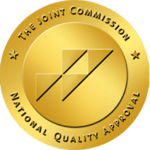The Matrix Model is a form of addiction treatment that involves a combination of different forms of therapy to help clients through the recovery process. The Matrix Model was the first of its kind and offered the first comprehensive approach to addiction treatment. It has since been modified and adapted to fit modern-day practices.
When cocaine and methamphetamine use became prevalent in the 1980s, treatment professionals worked to find a solution to this epidemic. The Matrix Model was born during this period and proved to be an effective form of addiction treatment that is still used today.
What is the Matrix Model of Addiction Treatment?
The Matrix Model of addiction treatment is a research-based approach that utilizes multiple therapeutic techniques to treat those struggling with substance use. This method was introduced in the 1980s and has been recognized as an effective treatment method for individuals combatting addiction. The Matrix Model combines multiple layers of cognitive-behavioral therapy (CBT), family therapy, contingency management, motivational interviewing, and relapse prevention strategies to create a comprehensive treatment plan for each individual.
Dealing with substance use and addiction can feel impossible to overcome. If you or a loved one may be suffering from these conditions, do not hesitate to receive treatment from a luxury rehab in LA. Find a treatment facility that’s right for you and get the help you deserve.
How Does the Matrix Model Work?
The Matrix Model is a 16-week program that incorporates various treatment methods to address specific aspects of addiction and recovery. Clients are treated based on their specific needs, so treatment will not be the same for everyone.
Education
Educating clients on the nature of addiction helps people understand how substance use affects the brain and body helps. Understanding the consequences of substance use and addiction is important because it helps motivate clients to achieve recovery. It is not easy to accept that you have a substance addiction and are in need of intensive outpatient in Los Angeles. It may feel shameful or embarrassing, but millions of people all over the world struggle with addiction every day. There is no reason to feel bad about seeking help because it will improve your life and overall well-being.
Individual Counseling
One-on-one therapy is a critical component of the Matrix Model. This form of therapy helps treatment professionals understand how each individual should be treated. Individual counseling helps to identify relapse triggers that may cause clients to resort back to their old habits.
Then, therapists can develop a treatment plan that will eliminate these triggers and promote positive thoughts. Also during these sessions, clients can work with therapists to set goals and develop coping strategies that will curb substance use and addiction. Individual therapy is typically a combination of motivational interviewing and cognitive behavioral therapy (CBT).
Group Therapy
Group therapy is especially effective for those going through recovery because it allows clients to engage in conversation with others in a similar situation. Listening to and sharing stories about addiction and substance use with others helps alleviate the pain. These therapy sessions are led by treatment professionals who can help interpret thoughts and lead the direction of the conversation.
Group therapy is a positive and encouraging atmosphere that is effective for relapse prevention. It is encouraged to continue engaging in group therapy and support groups even after achieving sobriety. Clients who have achieved sobriety can pass on the knowledge and skills used to beat addiction so that others may experience this success as well.
Family Therapy
Including family in the recovery process is a major component of the Matrix Model. Family is the most important human bond, so it is obvious how crucial it is for recovery. Family therapy allows loved ones to support and encourage a family member who is struggling. Family members are also educated about substance use and addiction so they can understand how to best help their loved ones. This form of therapy also improves communication between family members and builds a support system that is essential to recovery.
Drug Testing
Regular drug testing is a critical component of the Matrix Model. It helps monitor a client’s progress by tracking sobriety and providing insight. Although regular drug testing may seem intrusive, it ensures clients are maintaining sobriety and being truthful. Drug testing is done in a supportive environment and reinforces positive behaviors. Clients are held accountable for their actions using this system.
Relapse Analysis
Clients may relapse unexpectedly during treatment so it is important to understand what triggered this occurrence. Relapse analysis involves clients working with a therapist to understand what caused them to give in to temptation. Relapse can occur even when a person feels they have overcome substance use and addiction. When temptation hits, it can be difficult to ignore. The most important thing to do is avoid situations where substances are present and find an alternative.
Relapse is not failure. It is a step of the recovery process. If relapse occurs, do not give up on treatment. Instead, work with treatment professionals to better understand your triggers so you can avoid them in the future.
Support System
Establishing a support system is essential to the recovery process. Having a strong group of friends and family that support and encourage you helps alleviate the pain and stress caused by addiction. If you do not have a healthy group of people to be around, consider joining a support group to meet others that share a similar struggle.
The Matrix Model works to empower clients by providing them with the necessary skills and support to achieve recovery. The treatment is delivered through a comprehensive plan that includes both individual and group therapy programs. The Matrix Model typically consists of a 16-week program that involves intensive treatment, followed by a more extended period of aftercare to prevent relapse.
Goals and Benefits of the Matrix Model
The overall goal of the Matrix Model is to help eliminate clients’ urges to use substances by encouraging positive behaviors and habits. Clients follow a comprehensive 16-week treatment plan that helps them achieve sobriety. Following treatment, clients will come to find that they are equipped with the skills necessary to beat addiction and return to normal life.
The Matrix Model aims to help clients take control of their lives and maintain sobriety by practicing good habits and behaviors. Some goals of the Matrix Model include helping clients:
- Understand substance use and addiction
- Develop positive behaviors and habits
- Join a support group
- Learn relapse prevention skills
- Achieve goals set between the client and the treatment professional
Those who complete this 16-week comprehensive treatment program will reap the benefits of recovery. Recovery is freedom for those who are dealing with substance use and addiction. The Matrix Model covers all facets of addiction and ensures that clients leave treatment equipped with the tool required to maintain sobriety and prevent relapse. Those who complete Matrix Model addiction treatment will likely experience:
- Improved relationships
- Enhanced communication skills
- Positive habits and behaviors
- Freedom from addictive urges
Relapse Prevention
After treatment, it can be easy to fall back into the hole of substance use and addiction. It is critical to stay strong when temptation strikes because it will lead down another dark path. Instead of resorting to bad habits, find something else to fill your time with. Consider exercising, finding a hobby, or socializing with friends and family.
DBT for addiction can be harder than you think, so it is important to have a support system in place to help you when you feel tempted and about to relapse. If you are having trouble resisting urges, contact a treatment professional and receive proper treatment.
History, Statistics, and Effectiveness of the Matrix Model
The Matrix Model was developed in the 1980s and is still used in modern treatment facilities because of its proven effectiveness. It was first used to treat stimulant use, cocaine, and methamphetamine addiction, but has adapted and transformed to treat multiple other substance use disorders as well.
The United States saw a massive influx of people using methamphetamines and cocaine in the 1980s. At the time, the treatment programs were unable to aid those addicted to these substances. The Matrix Institute in Los Angeles, CA developed the Matrix Model to offer a comprehensive approach to addiction treatment. Numerous studies have concluded that those who have received Matrix Model treatment have reduced relapse rates, improved social functioning, and decreased criminal activity.
The Methamphetamine Treatment Project is the largest randomized study on treatment options for methamphetamines. This study was conducted between 1999 and 2001, and aimed to determine if Matrix Model treatment was more effective than treatment as usual (TAU). It was concluded that those who received Matrix Model treatment were 27% more likely to finish treatment. In addition, these people had 31% more methamphetamine-free drug tests.
Receive Addiction Treatment at Westwind Recovery®
Here at Westwind Recovery®, we offer top-of-the-line Matrix Model addiction treatment tailored to the needs of our clients. We understand how difficult it can be to overcome addiction and substance use, and we want to help you and your family. This comprehensive treatment program is proven to help our clients remain abstinent and achieve sobriety.
If you or a loved one may be struggling with substance use and addiction, get in touch with our team of treatment professionals. Contact us today to find out more about our treatment options!

Dr. Deena is the Chief Clinical Officer of Westwind Recovery®, an award-winning outpatient treatment center in Los Angeles where she oversees the clinical and administrative program and treatment methods. Dr. Deena is a doctor of psychology and licensed clinical social worker since 1993. LCSW #20628. Originally from the East Coast, Dr. Deena has worked running treatment centers, worked as a therapist in psychiatric hospitals as well as school settings and currently has a thriving private practice in the LA area. Dr. Deena has appeared regularly on the Dr. Phil Show as an expert since 2003. She has also been featured on many other TV shows, podcasts and has contributed to written publications as well as podcasts.







